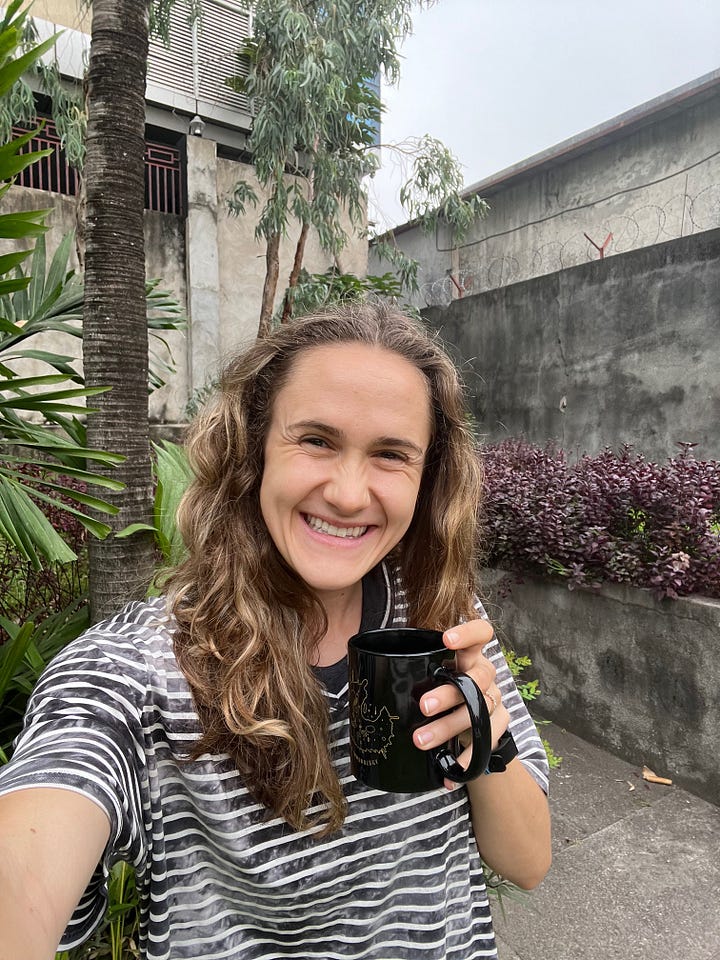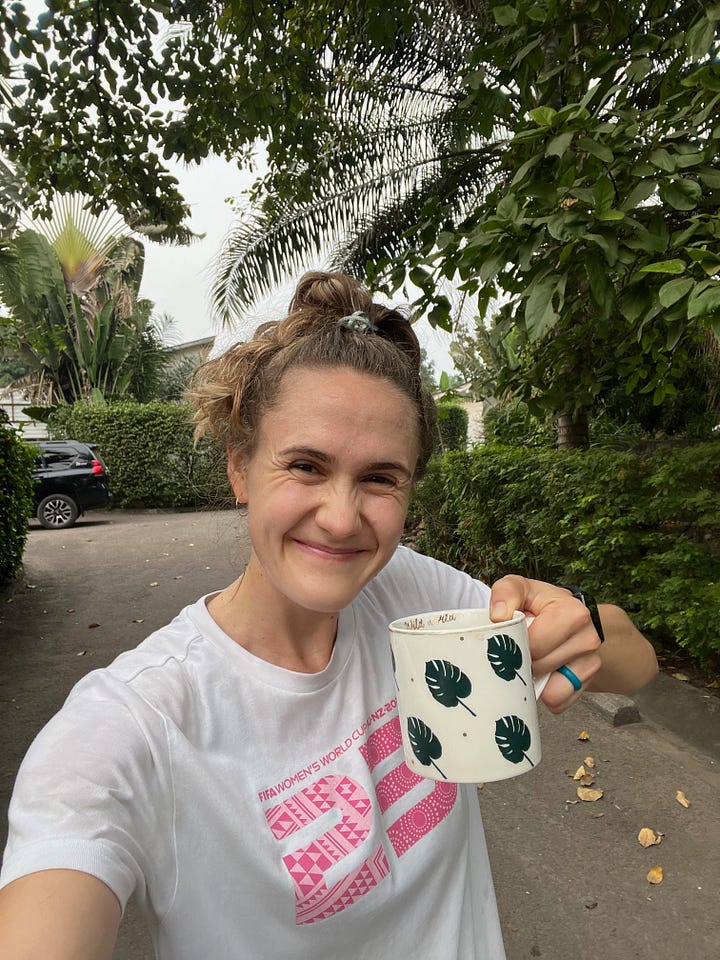This week, I felt more settled in my space and routines and can’t believe I am now counting down the days to departure. I am hoping that the week ahead holds productive time in the laboratory working through troubleshooting analysis processes with the LaboVet team, along with finding time to enjoy a proper Congolese meal. We have some new recommendations from colleagues to scope out, along with visiting my team’s old favorites (see roadside brochettes-poulet mayo below).
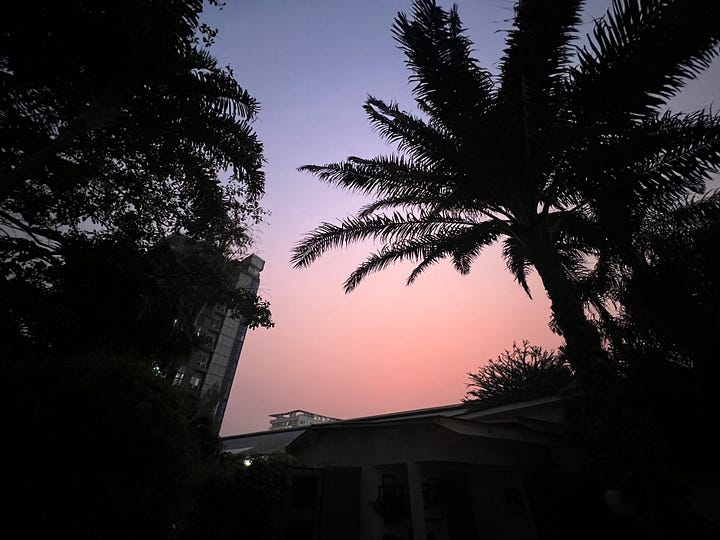
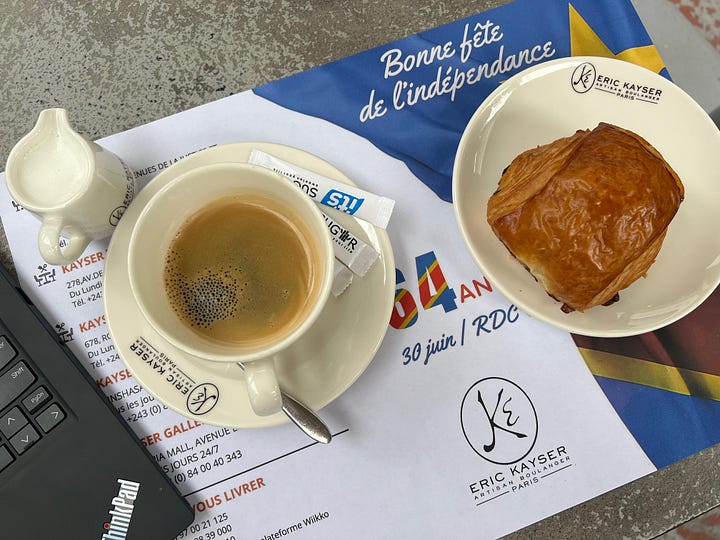
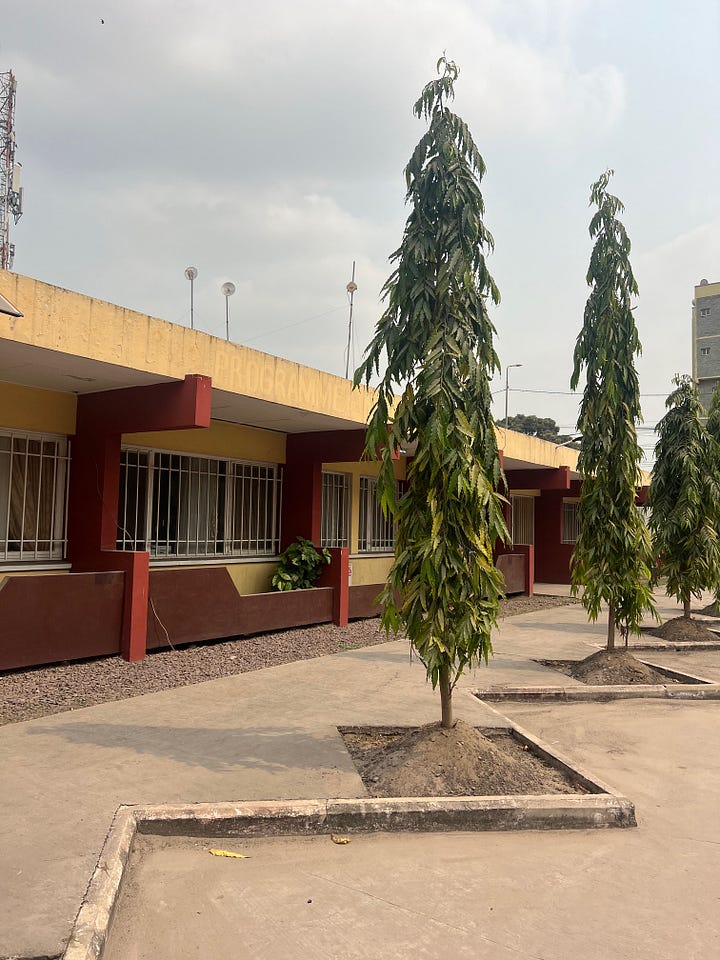
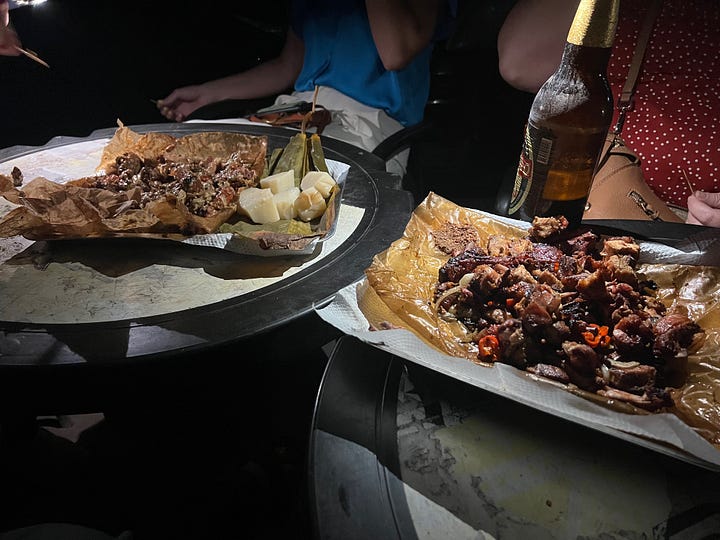
1. Place
As we celebrated both Congolese and United States independence days last week, I realized that this was my second 4th of July celebrated across the Pond; for the first, I was in Romania (Summer 2018). It’s odd to be abroad on a quintessentially American holiday, trying to communicate nuances about its meaning and traditions as a de facto cultural ambassador. It was a week of exceptionally Congolese food: macaroni & cheese, fried chicken with Chick-fil-A sauce, hot dogs, coleslaw, watermelon, Funfetti cupcakes, and Cold Stone ice cream. The festivities included a rooftop party with U.S. embassy folks and a smaller garden gathering we hosted in our concession.
While the cost of imported goods is much higher than the price of local goods like bananas, mangoes, avocados, onions, and potatoes, I have decided such staples as cottage cheese, Cholula, and Oreos are worth the splurge. Privileged embassy employees can receive orders through “The Pouch”, direct U.S. mail that even imports Amazon orders, but most American goods for my laboratory team come in visiting researchers’ suitcases (I brought a few items with me when I made the trip over). Managing logistics to coordinate the transportation of specific goods means that they are even more precious upon arrival—no rainbow sprinkle goes uneaten.

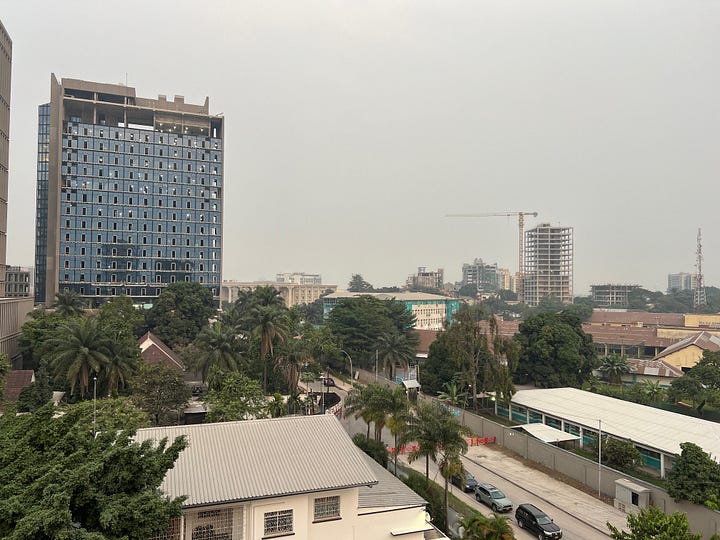


2. Project
I went on my final site visit with the LaboVet team last Wednesday, collecting sera and ticks from 15 cattle and sera from 5 workers at a private abattoir on the eastern side of Kinshasa. Compared to some of the other sites we had visited, this facility had higher throughput and more professionalized services, even offering halal butchering for VIP customers (though said services were often performed by workers in flip flops).
After collecting samples from animals, I was able be part of a conversation between one of our team veterinarians and the site veterinarian, learning about standard procedures for reporting disease observed in cattle arriving at the abattoir. The LaboVet team veterinarian explained the importance of the personal protective equipment (PPE) our technicians wear to protect themselves and other animals from potential infections. He also described the One Health relationship between samples collected from animals and people at the same site: Tracking the presence of disease in people, animals, and ticks at a site gives us a more comprehensive picture of its transmission and improves our ability to keep people and animals healthy through appropriate controls.
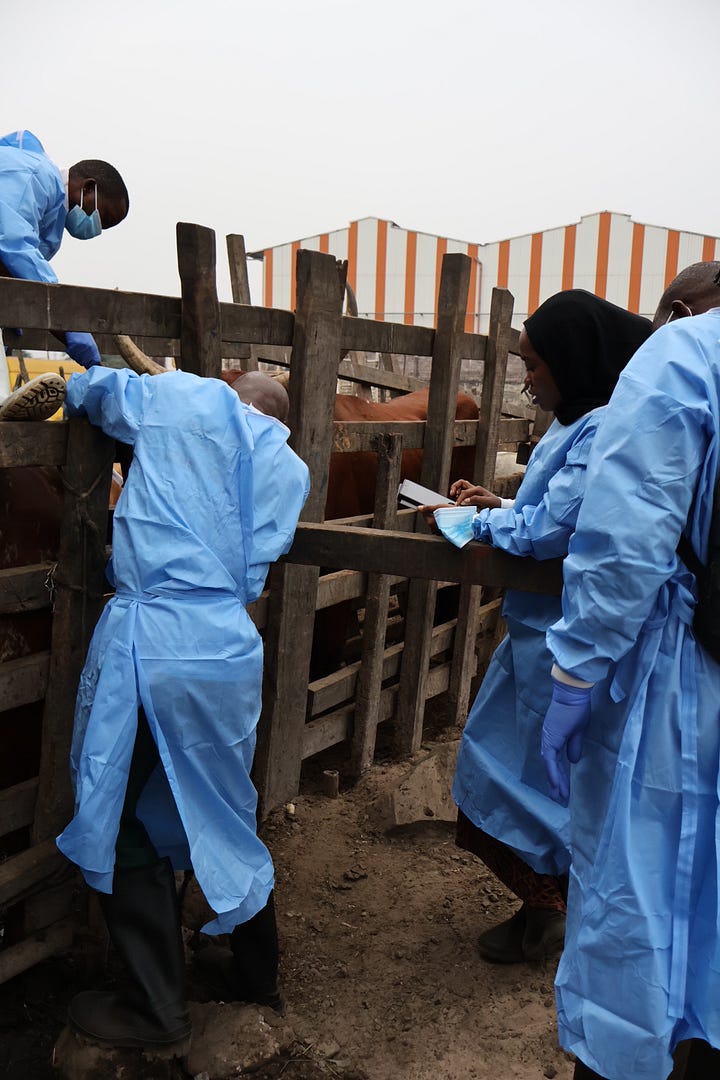


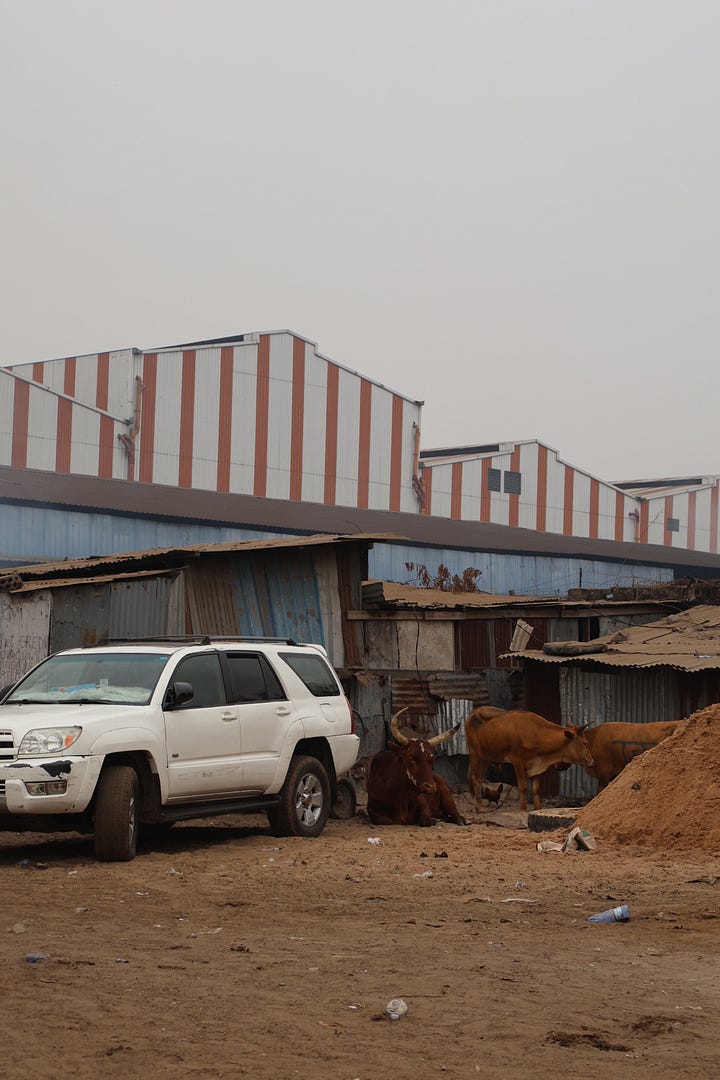
Starting tomorrow, I’ll be spending good chunks of time with the LaboVet team performing quality assurance tests on tick identification processes and starting to troubleshoot tick homogenization and RNA extraction—how we’re going to break down the ticks that have been sampled and isolate and kill any virus inside of them. I haven’t done benchwork since 2016 when running a synthetic biology laboratory. Wish me and my pipetting skills luck!
3. Paige
We welcomed a new researcher to our home this past week with another woman in public health joining our power squad, continuing adventuring, cooking, and cleaning together. I enjoyed coming off my slow weekend solo and have narrowed the items on my Kinshasa bucket list to accommodate only one more weekend (!) of fun. I’m still hoping to make it to “The Beach”, a big handicraft market, and a couple of other local food spots.
I’ve settled on naming the lizard that lives by our walkway R.L. as a compromise for the crowd-sourced naming decision; Reggie won by a narrow margin, but I wanted to honor votes for Larry, too. Thank you to those who voted on this very important matter. I continue in my pursuit to name a songbird whose whooping I enjoy around dawn and dusk but think my birding app may be limited by lack of AI training with African avian species (we’re hoping to improve a similar problem with the tick arm of our project).
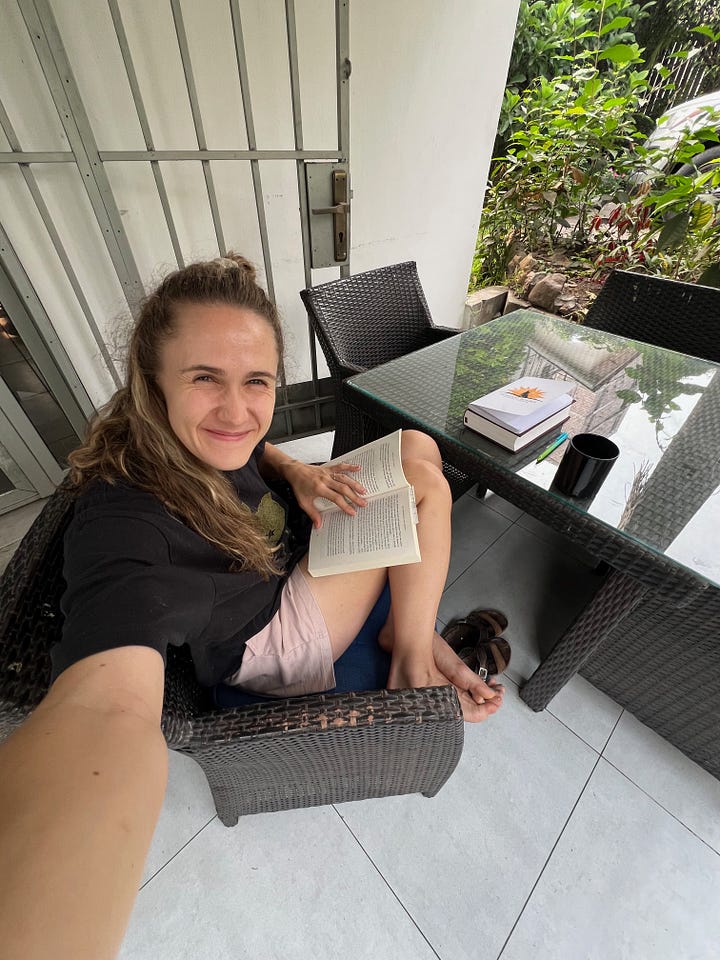
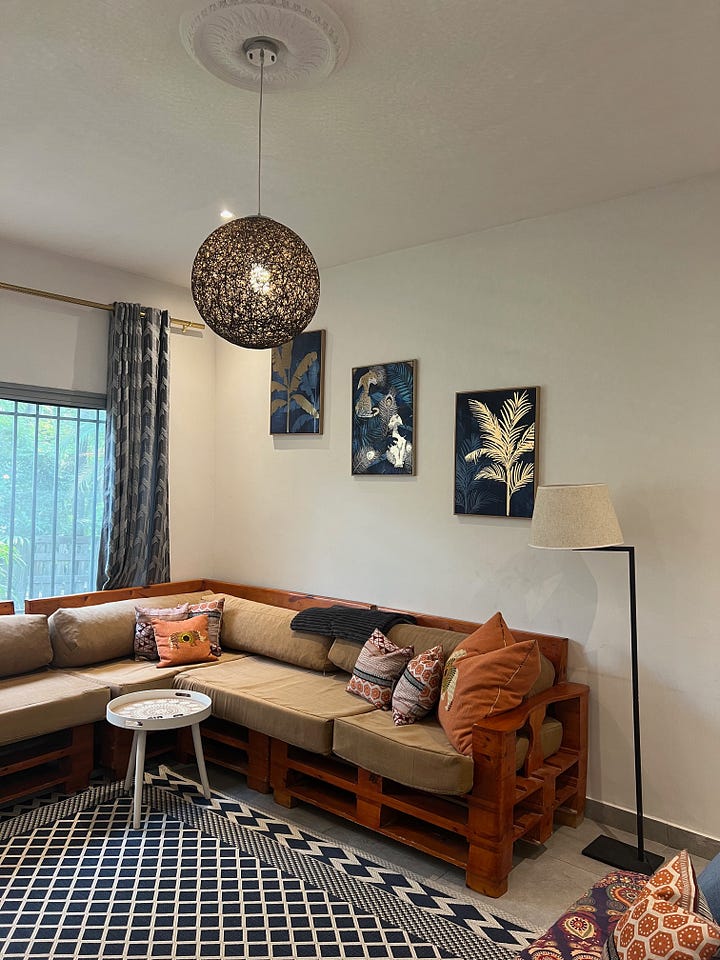
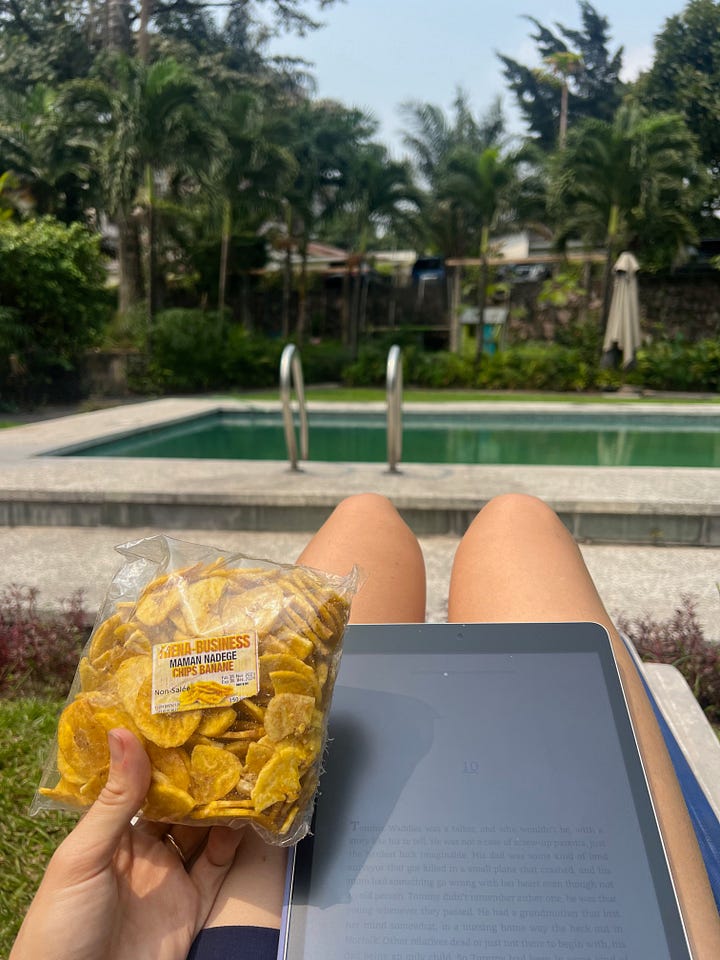

4. Planet
It feels fitting that I give a shout-out to Congolese coffee, which is mostly produced in the eastern part of the country, Kivu—a beautifully forested region where some of the heaviest fighting occurs in ongoing armed conflict. Most of the coffee grown here in the DRC is shipped outside the country, but some producers and local roasters are working to improve local distribution of the Congo’s high-quality product. One of our favorite coffee shops in Kinshasa, Roots, roasts their own beans sourced from local growers. The article linked below details more hopes and dreams for the Congolese coffee industry’s potential for economic stimulation:
“The DRC has been dubbed the final frontier for specialty coffee. After years of strife, demand for Congo Coffee is surging. Newly adopted agricultural practices, the post-harvest processing of the beans, and the rediscovery of unique cupping characteristics by the global consumers are driving the demand. All these ingredients put together and the future will witness the emergence of the Democratic Republic Coffee.” - Kambale Kisumba Kamungele, Chairman of the African Fine Coffees Association (AFCA) DRC Chapter, quoted by a recent coffee journalism feature on Congolese beans
Aside: Yes, I did bring my coffee grinder to Congo. Yes, I did almost fry said grinder using an adapter that I thought was also a converter. No, I did not start a house fire. Yes, I did successfully use the grinder with improved technology. Yes, I am now happily (and heavily) caffeinated.

